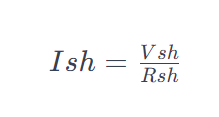Shunt Current Calculator
Introduction
In the realm of electrical engineering and circuit design, understanding shunt current is crucial for maintaining the efficiency and safety of systems. To simplify the calculations associated with shunt current, a dedicated tool known as the “Shunt Current Calculator” proves to be invaluable. This article not only provides a ready-to-use for a Shunt Current Calculator but also offers insights on how to use it effectively.
How to Use
The Shunt Current Calculator is designed to streamline the process of determining shunt current in electrical circuits. Follow these simple steps to utilize the calculator:
- Input the values in the designated fields.
- Click the “Calculate” button to initiate the computation.
- Review the calculated shunt current in the result area.
Formula
The formula for calculating shunt current (Ish) is as follows:

Where:
- Ish is the shunt current.
- Vsh is the voltage across the shunt resistor.
- Rsh is the shunt resistor’s resistance.
Example Solve
Let’s consider an example where Vsh=10 volts and Rsh=5 ohms.

Therefore, the shunt current in this scenario would be 2 Amperes.
FAQs
Q1: What is the purpose of a shunt current calculator?
A1: The calculator simplifies the process of determining shunt current in electrical circuits, aiding engineers in maintaining optimal system performance.
Q2: Can the calculator handle different units for voltage and resistance?
A2: Yes, the calculator accommodates various units for voltage and resistance, providing flexibility for diverse engineering scenarios.
Q3: Is the calculator suitable for both educational and professional use?
A3: Absolutely. Whether you’re a student learning about shunt current or a seasoned engineer, this calculator proves beneficial for a wide range of users.
Conclusion
In conclusion, the Shunt Current Calculator presented here serves as a handy tool for engineers and students alike. By providing a simple yet accurate means of computing shunt current, this calculator contributes to the efficiency and precision of electrical circuit analysis.
